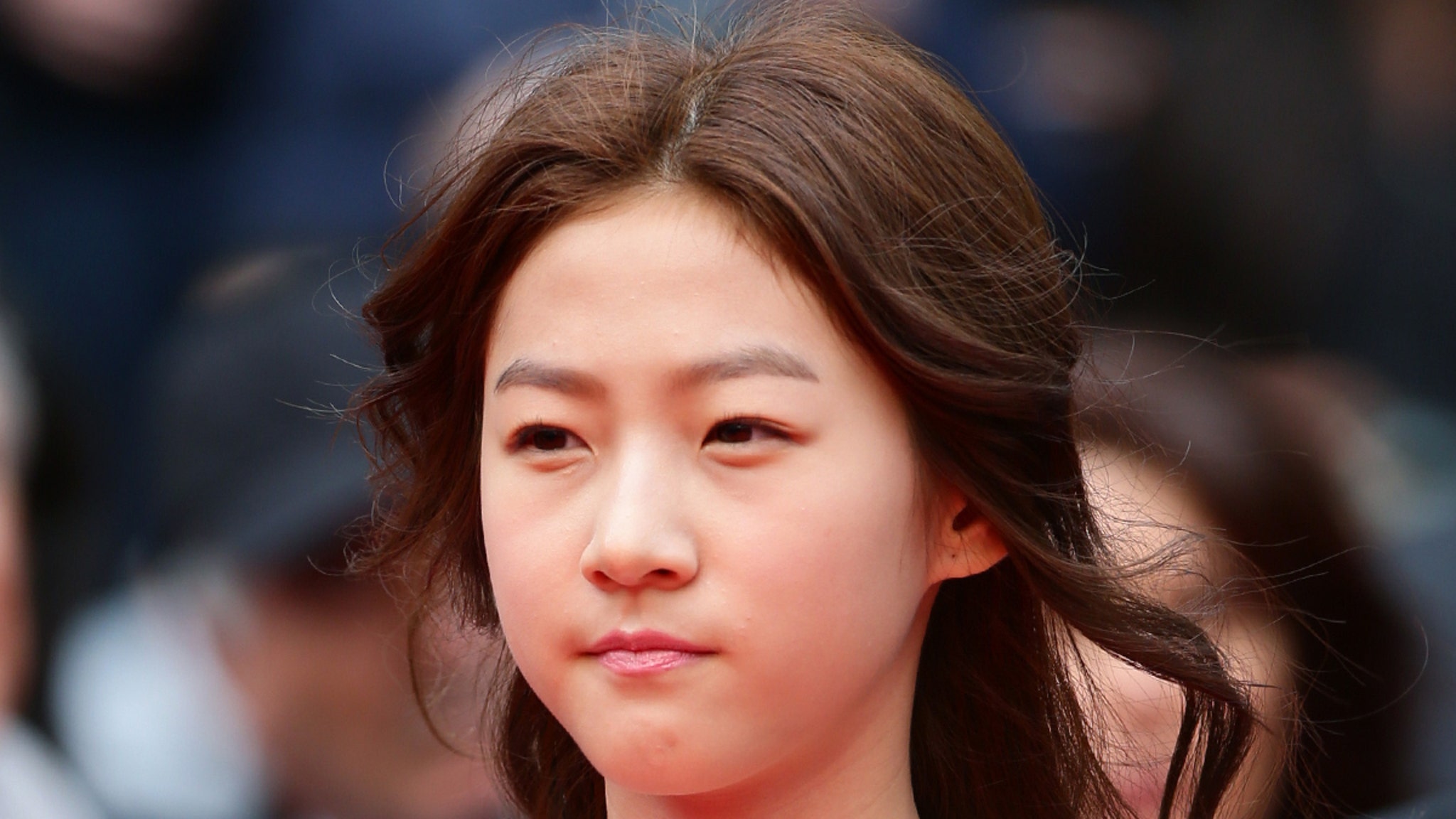Culture
150 Years of See and Be Seen at Paris’s Palais Garner Opera House

The Palais Garnier in Paris is among the world’s oldest theaters that still functions more or less in its original state. And long before the appearance of the selfie-stick, the Garnier was a place not just to see art, but to be seen.
At a 150th anniversary gala on Friday, before guests reach the marble staircase, the baroque sculptures, the inlaid golden mosaics and the elaborately painted ceiling, they will pass two giant mirrors set on the ground floor.
These were the architect Charles Garnier’s gift to season ticket holders, for a quick once-over before they stepped onto a marble catwalk beneath four levels of viewing galleries.
“They were there to give them some psychological reassurance. To look at themselves and say, ‘Everything is good. You are ready,’” said Sandrine Lamiable, a Palais Garnier tour guide leading a group of tourists up the marble steps earlier this month. “Then, they were plunged into a veritable palace, as princesses and princes.”
The point of the Garnier Opera building was never just the show onstage. It was the show of being on display, particularly for the rising bourgeoisie that had profited off France’s booming industrial revolution.
“The point of the opera was to parade, for the elites of the time to offer a spectacle: themselves,” said Lamiable.
The grand opera house is home to the Paris Opera, but since the opening of the much larger Opéra Bastille theater across town in 1989, the Palais Garnier has become a bastion of ballet. This is where the Paris Opera Ballet performs, though the opera company still presents some smaller works on the Garnier stage. Around 400 permanent employees work in the building, from musicians to stage hands.
Up on the sixth floor on a recent afternoon, Xavier Ronze was rushing between five costume ateliers where dozens of seamstresses work on tutus, tailored coats, feathered headdresses. Over the years, Ronze, the head of the building’s dress making and sewing department, has worked with star designers including Karl Lagerfeld and Christian Lacroix.
“This building has a soul,” Ronze said, stepping into a wood-paneled room where costumes are brought out of storage for repair. White and yellow tutus hung from overhead metal rails for the dancers in the upcoming production of “The Sleeping Beauty.” His current staff of 62 were working on 300 costumes for the show, Ronze said.
The opera house was born, in part, from an assassination attempt in 1858. Emperor Napoleon III of France ordered a new more spacious and secure building after he and his wife, Eugenie, survived a bomb attack on their carriage outside the Salle Le Peltier, an earlier Paris opera house.
His government held a competition. More than 170 proposals were submitted, including by famous architects like Eugène Emmanuel Viollet-le-Duc, who was in the midst of restoring Notre Dame cathedral.
Garnier’s win was a surprise. He was relatively unknown and had extremely modest roots. The son of a blacksmith and a lace maker, he had risen to study at the Ecole des Beaux-Arts and then won the prestigious Grand Prix de Rome.
Garnier represented the esprit of his time’s burgeoning middle class, when artists, writers and businessmen could get ahead through merit and skill, not birth, said Christopher Mead, a retired art history professor who wrote a book about the Palais Garner.
His idea was to build a palace for that growing class, Mead said by phone from Albuquerque, where he lives.
Instead of being the reserve of the emperor and his entourage, the grand escalier and the golden grand foyer were for anyone who had a ticket — whether a very expensive season pass or a cheaper evening seat.
“Everyone performed there, everyone got a star turn,” said Mead. “It was quite radical in that way.”
Garnier set up his atelier on the site, chosen by the Emperor’s prefect Georges-Eugène Haussman, who had been charged with modernizing Paris. For the next 14 years — with a pause during the Prussian invasion of the city and the civil uprising known as the Commune — Garnier oversaw the construction closely.
He mixed elements of neoclassical, romantic and baroque architecture and introduced mosaics and gilding for the first time to Paris, according to Gérard Fontaine’s book “Charles Garnier’s Opera.”
Garnier designed the bronze grills of the balconies and ticketing counters, as well as the vases on display, and personally traveled to quarries as far away as Algeria and Sweden to pick out red, green, yellow and white marble for the building — a riot of color in a city whose palette tends toward cream and gray.
Still today, workers in the building speak about Garnier, who died in 1898, as though he was a treasured colleague.
“He chose everything. He designed the curtains in the grand foyer, he picked all the artists,” said Benjamin Beytout, a marketing director at the Paris Opera, who has worked at the Palais Garnier for two decades. “It was his masterpiece.”
Garnier had the audacity to write his name on the building — something few architects dared to do 150 years ago. Like many of his touches, it’s subtle — almost an inside joke between Garnier and those who love him. Guides regularly use laser pointers to trace the curly, overlapping letters on the ceiling of the first floor rotunda: “Jean Louis Charles Garnier, architect 1861-1875.”
He tucked sculptures and paintings of salamanders throughout the building, mostly near wiring and gas outlets. They were to symbolically ward off fire, since European myth held salamanders could survive flames. In 1873, the Salle Le Peletier theater was destroyed by a blaze. By then, Napoleon III had died in exile, and it was unclear whether the Palais Garner would ever be completed. But, with the Salle Le Peletier gone, there was renewed motivation to finish: The city needed an opera house.
Philippe Moyal, a bartender at the Garnier who has served champagne to the likes of Bruce Willis and Catherine Deneuve, said he had considered the salamanders a symbol of regeneration. “Even when we are tired, given how magnificent it is, we find momentum again,” he said, adding that he often pops into the show before intermission champagne service, to catch a snippet of inspiration.
On the building’s top floor, dancers including the star ballerina Roxane Stojanov were rehearsing on a floor that is tilted just slightly at a 5 percent incline. That’s to allow the dancers to get used to one of the building’s many quirks: The stage was built that way, so viewers in the back of the auditorium could see better. It took some getting used to, when she first joined the Paris Opera Ballet 11 years ago, Stojanov said.
“Especially when it comes to pirouettes, it can be destabilizing,” Stojanov, 29, said in an interview between rehearsals.
Before and during performances, dancers warm up in the foyer de la danse, a gilded room with dripping chandeliers at the back of the stage, where season ticket holders would court ballerinas a century ago. Stojanov said she had heard of a secret corridor to get to a hidden viewing balcony in the room, but she has never found it.
A few years ago, while repairing the empress’ box, workers uncovered another secret: a door hidden behind the crimson fabric wall covering. It led to a closet, containing a commode and a water pitcher.
“I don’t know if it was ever used,” said Beytout, the marketing director. “We are always discovering — and rediscovering — new things here.”
The shows at the Palais Garnier are regularly sold out. Between the Paris Opera’s two theaters, the company played to full houses for 93 percent of the last season, according to its 2023 annual report. But still, company administrators work to bring in a younger clientele — offering choice seats for just 10 euros to people under 28 during special previews of new productions.
Young fiancés Pierre-Antoine Richet, 22, and Sidonie Duvivier, 21, both chemistry students, got dressed up recently to see the American director Peter Sellar’s take on Jean Rameau’s opera “Castor et Pollux.” For both, it was their first time in the building.
They were awed by “the explosion of gilding, chandeliers with crystals,” Richet said, and got lost in the building’s myriad halls and rooms. They were bewitched, both said, to be sitting beneath the auditorium ceiling that the artist Marc Chagall painted in 1964 — one of the few additions to the building since it opened in 1875.
“When Chagall’s ceiling was installed, there were strong reactions. Some said it didn’t go at all with the architecture of the place,” said Richet. “But I find it fits perfectly well.”






























